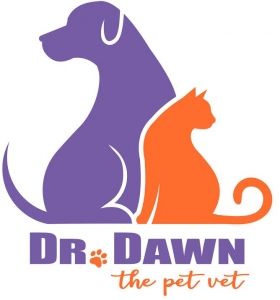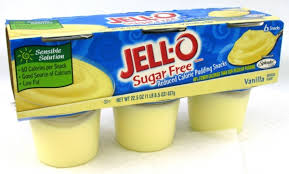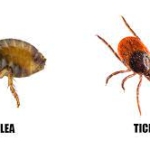 It came as a surprise to me to learn how many things the sweetener xylitol is in. Things you might never suspect. A surprisingly small amount is toxic to dogs, and I thought it important to discuss it. I find that many clients are surprised by this, and thought you might be as well.
It came as a surprise to me to learn how many things the sweetener xylitol is in. Things you might never suspect. A surprisingly small amount is toxic to dogs, and I thought it important to discuss it. I find that many clients are surprised by this, and thought you might be as well.
Xylitol is a sweetener that causes hypoglycemia and liver damage. New products on the market such as nasal sprays, OTC sleep aids, multivitamins, prescription sedatives, antacids, stool softeners, smoking-cessation gums and other products may contain unexpectedly large amounts of the compound. Dogs that ingest these products face a double risk – not only of poisoning from the active ingredient in the product, but also from the xylitol. Thus, the combination can lead to varied serious signs, which can complicate treatment and the prognosis.
Some background
Xylitol is a natural sugar alcohol normally found in small amounts in many fruits and vegetables. Because of its sweet taste and plaque-fighting properties, it is frequently used as a sugar substitute in chewing gun, breath mints and dental products like toothpaste and mouthwash. Due to its low glycemic index, it is also being sold in bulk to substitute for table sugar in baking and in- home use. As a result, Pet Poison helplines report many cases of dog intoxication after ingesting homemade bread, muffins and cupcakes made with xylitol.
How much is too much/ How to determine the amount in a product
Xylitol is typically considered part of a product’s “proprietary ingredients”, so the quantity will not be listed on the package label. While some companies are willing to release the amount of xylitol in their products, many are hesitant to do so and may even ask veterinarians to sign statements prior to release of the information. After much effort in the field, many companies have been willing to share this info during management of emergencies. When in doubt of ingestion, best to contact poison control centers, directly or through your vet.
In some cases, it is helpful to use the location of xylitol within an ingredient list to estimate its quantity in the product. For example, in the US, all foods must list their ingredients in descending order of predominance by weight. So, the ingredient that weighs the most is listed first, etc. IN general, for most chewing gums, the amount of xylitol is often clinically insignificant it it’s listed as the fourth or fifth ingredient. However, if it is listed as one of the first three ingredients, extreme caution should be taken.
For drugs and dietary supplements, the regulations regarding the order of ingredients is considerably different. Often, xylitol is considered an “inactive ingredient” or “other ingredient”, and are not required to be listed in order of predominance. Often they are listed in alphabetical order, which may lead an uninformed pet owner or veterinary professional to incorrectly assume that there is a very low concentration of xylitol in the product.
XYLITOL CONTAINING PRODUCTS
Over-the-counter medications:
– Axia3 ProDigestive Antacid (flavored chewable tablets, propriety amount)
-Children’s Allegra Oral suspension
-Fleet Pedia-Lax Liquid Stool Softener
-Umcka Cold and Flu chewable tablets (homeopathic product)
Dietary supplements, vitamins:
-KAL Colostrum Chewable, Vanilla Cream (chewable tablets)
-KAL Dinosaurs Children’s Vitamins and Minerals (chewable tablets)
-Kidz Digest Chewable Berry from Transformation Enzyme
-L’il Critters Fiber Gummy Bears
– Mega D3 Dots with 5,000 IU of Vitamin D3 per “dot” (dissolvable tablet)
– Stress Relax’s Suntheanine L-Theanine chewable tablets
-Vitamin Code Kids by Garden of Life (chewable multivitamins)
Nasal Products:
-Xlear Sinus Care Spray
-Xylear Nasal Spray (for adults and children)
– Xyliseptic Nasal Spray
Prescription Drugs:
-Abilify Discmelt Orally Disintegrating Tablets (aripiprazole), an atypical antipsychotic
-Clonazepam Orally Disintegrating Tablets, benzodiazepine
– Emtriva oral solution (emtricitabine), HIV-1 reverse transcriptase inhibitor
– Mobic Oral Suspension (meloxicam), nonsteroidal anti-inflammatory
-Neurontin (gabapentin) Oral Solution
– Riomet (metformin) Oral Solution, antidiabetic agent
-Varibar barium sulfate products, liquids and puddings for swallowing studies
-Zegerid Powder for Oral Suspension (omeprazole), proton pump inhibitor.
Foods with wylitol as the primary sweetener (excluding gums and mints):
-Clemmy’s Rich and Creamy ice cream products
-Dr. John’s products (hard and soft candies, chocolates, drink mixes and so on)
-Jell-O sugar-free pudding snacks
-Nature’s Hollow jams, syrup, ketchup, honey and so on
-SparX Candy
-Zipfizz energy drink-mix powders.
Toxic doses and treatment:
The toxicity is dose dependent. The dose necessary to cause low blood sugar in dogs is approximately 0.1 grams/kg, while the amount needed to cause liver necrosis is approximately 0.5 grams/kg. Most chewing gums and breath mints typically contain 0.22 to 1.0 gram of xylitol per piece of gum or mint! Therefore only one piece of gum may result in hypoglycemia in a 10-pound (4.5 Kg) dog.
Evidence of hypoglycemia are usually seen within 1-2 hours of ingestion. IN rare cases, there is a delay as much as 12 hours. Prompt decontamination by causing vomiting, and correcting the low blood sugar is key in the treatment. Hospitalization is typically required, particularly if they have absorbed some of the compound. If dogs are exposed to liver toxic doses, the treatment and monitoring can be more extensive and complicated, and is more likely to be successful if caught early.
Dr. Dawn

Please share and subscribe here





